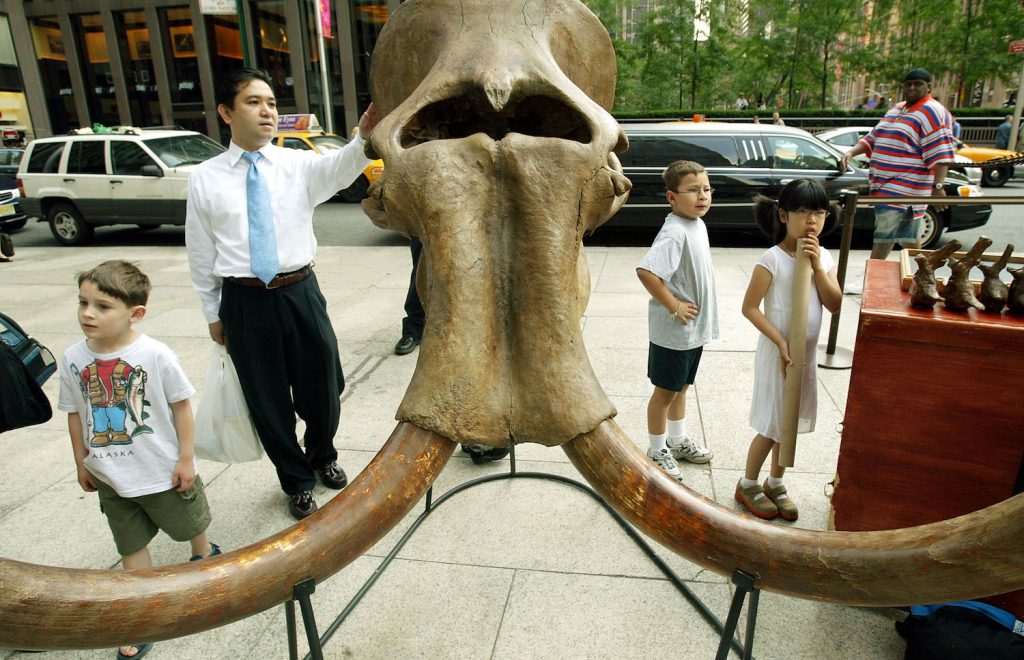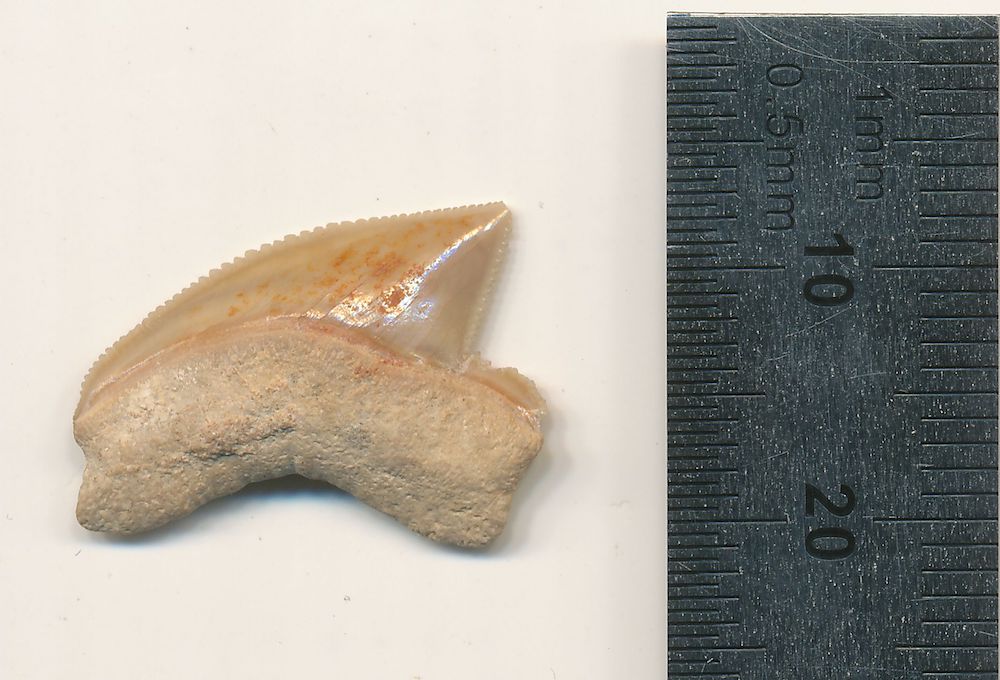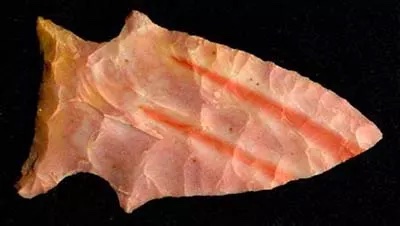The Deep Human Story of Collecting Fossils

In 2020, researchers from Israel, Egypt, and Germany were analyzing ancient fish remains and fishing methods from the Mediterranean Levantine region. Archaeologists had found a cache of shark teeth in the nearly 3,000-year-old layers of rock at the City of David site in Jerusalem, and the researchers speculated they were food scraps from as far back as 900 B.C., perhaps tossed aside in a Biblical-era market.
They sent the teeth to a lab for isotope analysis to confirm their suspicion that an Iron Age angler had caught the sharks in the shallow Nile delta. But the teeth took them in an unexpected direction.
A closer examination of the teeth’s strontium and oxygen composition revealed that no human could have reeled in these sharks—because they were 80 million years old.
In the time of the last dinosaurs, these sharks likely swam in the Tethys Sea, which once covered present-day Israel in warm, shallow water. According to the team’s investigation, the teeth were probably not eroded out of the fossil-containing layers of the local bedrock. Instead, they were likely transported from the Negev Desert, where similar teeth have been found, some 90 kilometers away.
“They were brought to Jerusalem,” says Thomas Tütken, a geoscientist at the Johannes Gutenberg University of Mainz in Germany who was researching the ancient fishing methods. “But we don’t know how or why.”
The teeth come from at least two species, and though they don’t seem to have been used for jewelry, they are in fairly good condition. This led the researchers to hypothesize they were perceived to have some value and were part of a collection, probably belonging to someone who lived during the Iron Age, since they were found in that layer of sediment.
These teeth are some of countless fossils that have been found at archaeological sites around the world. Although paleontology emerged as an academic discipline only around the turn of the 19th century, it seems the first people fascinated by paleontology were our ancient ancestors.
As far back as Homo heidelbergensis and the Neanderthals—about 1.3 million to 40,000 years ago—our ancestors have drawn inspiration from fossils, incorporating them into their art and ornamentation, their oral and written traditions, and their understanding of science.
According to archaeologist Peter Leeming, an honorary research fellow at the University of Exeter who has studied fossils from archaeological digs, “Discovery and collection is as old as us and our hominid relations.”
One of the oldest artifacts containing a fossil was found in 1886 at a cave near Arcy-sur-Cure, France. Archaeologists were searching for Paleolithic-age stone and bone tools when they found a pendant made from a 400-million-year-old trilobite—an extinct arthropod that thrived in the world’s oceans starting in the Cambrian Period.
Because trilobites ranged so widely, they have turned up in ancient jewelry and artwork around the globe, from British Columbia to Australia. According to a 1931 account from editor and natural historian Frank Beckwith, the Ute people in what is today Utah made necklaces from trilobites, which they referred to as Timpe khanitza pachavee, or “little water bug in stone.” The Ute people apparently told Beckwith that they wore the pendants as protection from sickness and gunshots.
Throughout North America, Indigenous peoples have used fossils to make jewelry, tools, and sacred objects for thousands of years. The Hopewell culture, a widespread set of communities that flourished between about 100 B.C. and A.D. 400, used fossils such as shark teeth to create pendants and mortuary offerings, which are now kept at the Hopewell cultural site in Ohio. And in places such as present-day Petrified Forest National Park in Arizona, Paleoindian communities crafted elegant tools from colorful petrified wood—fossils of trees that lived more than 200 million years ago.
Such practices were also common in Europe. In England, just northwest of London, archaeologists found a 400,000-year-old flint ax embedded with a fossilized sea urchin that lived millions of years earlier. This artistic tool was probably made by a member of the species H. heidelbergensis. Some 75 miles southeast, a 4,000-year-old Homo sapiens woman and child were found in a grave. They were encircled by hundreds of fossilized urchins, which have a distinct star-shaped pattern. Neanderthals living in what is now France also fashioned tools from these star-spangled fossils.
Elsewhere, scientists have found evidence that other ancient people also crafted objects with fossils. In the 1920s, paleontologists uncovered 20,000-year-old workshops littered with dinosaur egg fragments in Mongolia, not far from a site where the team had uncovered several nests of preserved eggs. “We found that the Stone Age people had anticipated us in the discovery of the dinosaur eggs,” Roy Chapman Andrews, an explorer for the American Museum of Natural History who led the expedition, told The New York Times. “They found the eggs about 20,000 years before we did and used square bits of shells for necklaces.” Andrews also met a contemporary Mongolian woman who made dinosaur egg necklaces, carrying on this ancient style of art.
One of the first scholars to study ancient uses of fossils was Kenneth Oakley, a paleontologist, anthropologist, and long-time curator at the British Museum who passed away in 1981. These relics, he wrote, had “no obvious practical value” yet “have been noticed, picked up, and evidently regarded with some interest since the earliest times.” He concluded that fossils’ unusual shapes and colors likely influenced people to believe they had magical powers, and that’s why they show up as jewelry and in burials.
There are also signs that ancient people learned about the past from fossils, says Adrienne Mayor, a folklorist and historian of ancient science at Stanford University. As early as the sixth century B.C., natural philosopher Xenophanes wrote that finding seashells on mountaintops or deserts indicated that seas once covered these areas.
Mayor, the author of two books on early uses of fossils, says there is evidence that fossils in places such as ancient Greece and Israel inspired—or at least confirmed—traditional stories and beliefs. “The petrified bones of mammoths, mastodons, giant giraffes and rhinos, whales, and other long-extinct mammals of the Miocene to the Pleistocene played a role in myths and legends about giants, heroes, [and] monsters by seeming to confirm old stories of fabulous beings that once lived on the land and then vanished,” she says.
“Fossils certainly influenced the belief in myths of colossal, strange creatures,” says folklorist Adrienne Mayor.
Such stories appeared in the writings of first-century Jewish historian Josephus, Mayor notes. Josephus wrote that the early Israelites killed a “race of giants, who had bodies so large, and countenances so entirely different from other men, that they were surprising to the sight, and terrible to the hearing. The bones of these men are still shown to this very day.” Around the same time, the Roman emperor Augustus kept a large collection of fossilized bones, which he likely used to affirm the “truth” behind myths of giants and monsters.
Scholars have suggested that the vast array of fossils from hippopotamuses, saber-toothed cats, mammoths, giant tortoises, and other large animals littering the foothills of the Himalayas influenced the Sanskrit Indian epic Mahābhārata, which has origins as far back as the eighth century B.C. and includes descriptions of oversized elephants and horses.
“We cannot discern which came first—observations of remarkable fossil bones, teeth, skulls, talons, eggs, and footprints, or myths of fantastic creatures that arose from the storytelling imagination,” Mayor says. “But when ancient accounts of discovering gigantic bones relate them to the myths, then we can say there was a ‘feedback loop.’ Fossils certainly influenced the belief in myths of colossal, strange creatures and were taken as proof of their past existence.”
As for the shark teeth in Jerusalem, researchers admit it’s still a mystery why they were collected or what they were used for. But they stand out to the scientists as a rare find. Because sharks’ bones are made of soft, compostable cartilage, it’s uncommon to find their remains in archaeological or paleontological sites. Sharks’ teeth fossilize more often, preserving their sharp and sometimes serrated shape—which explains how they survived their 80-million-year journey to Jerusalem.
“It is amazing to think that someone at some point found them interesting and picked them up,” says Irit Zohar, a zoo-archaeologist at the Oranim Academic College of Education in Israel who was involved in the project. “It was probably not due to the teeth’s beauty, because they are not exactly good-looking. But it could have been a child, or someone maybe thought they could be useful as tools.”
Zohar points out that the teeth ultimately ended up on the ground mixed with other objects and food remains, and that pile of sediment was eventually used to fill in the foundations for a new house. Like many objects humans hold onto, it seems the value of these fossils was fleeting. “Maybe they had lost their meaning or use and were tossed aside,” she says. “I don’t think we will ever really know.”































